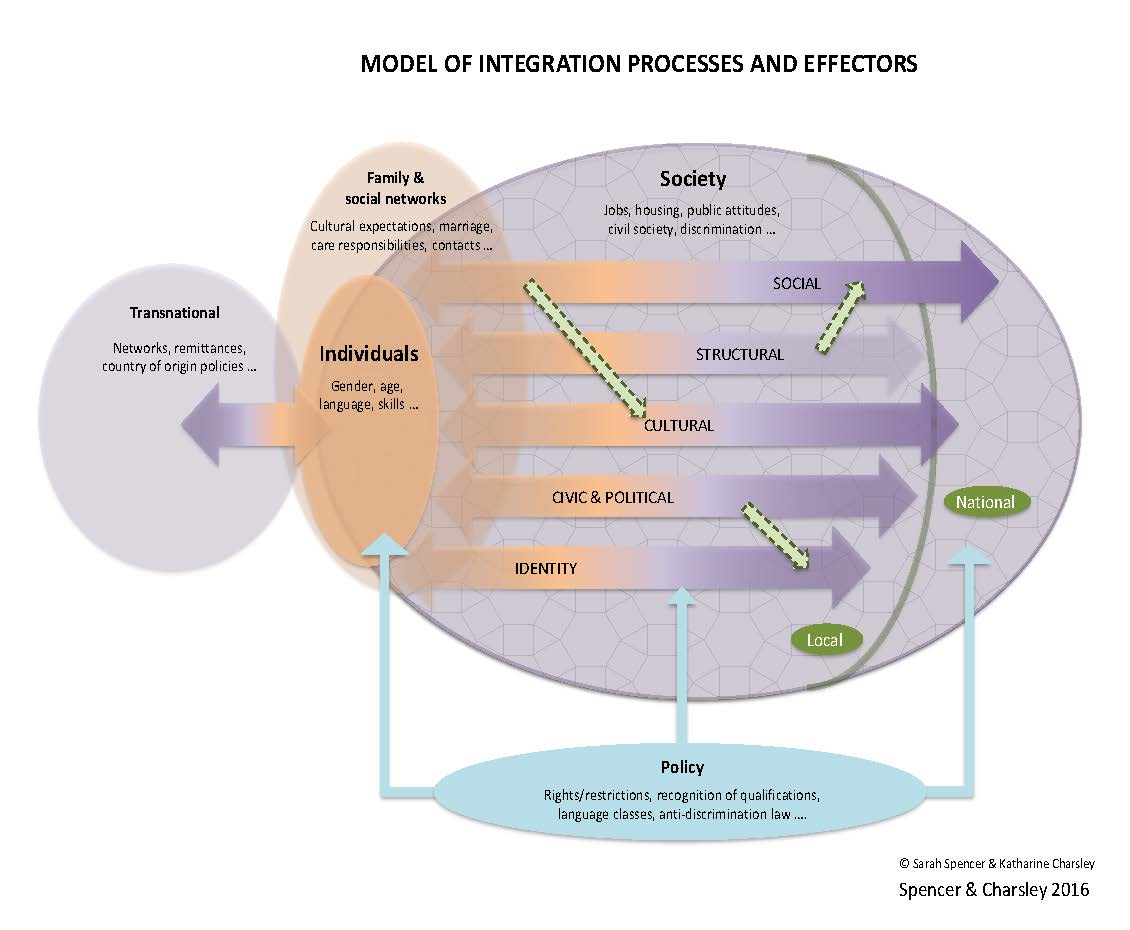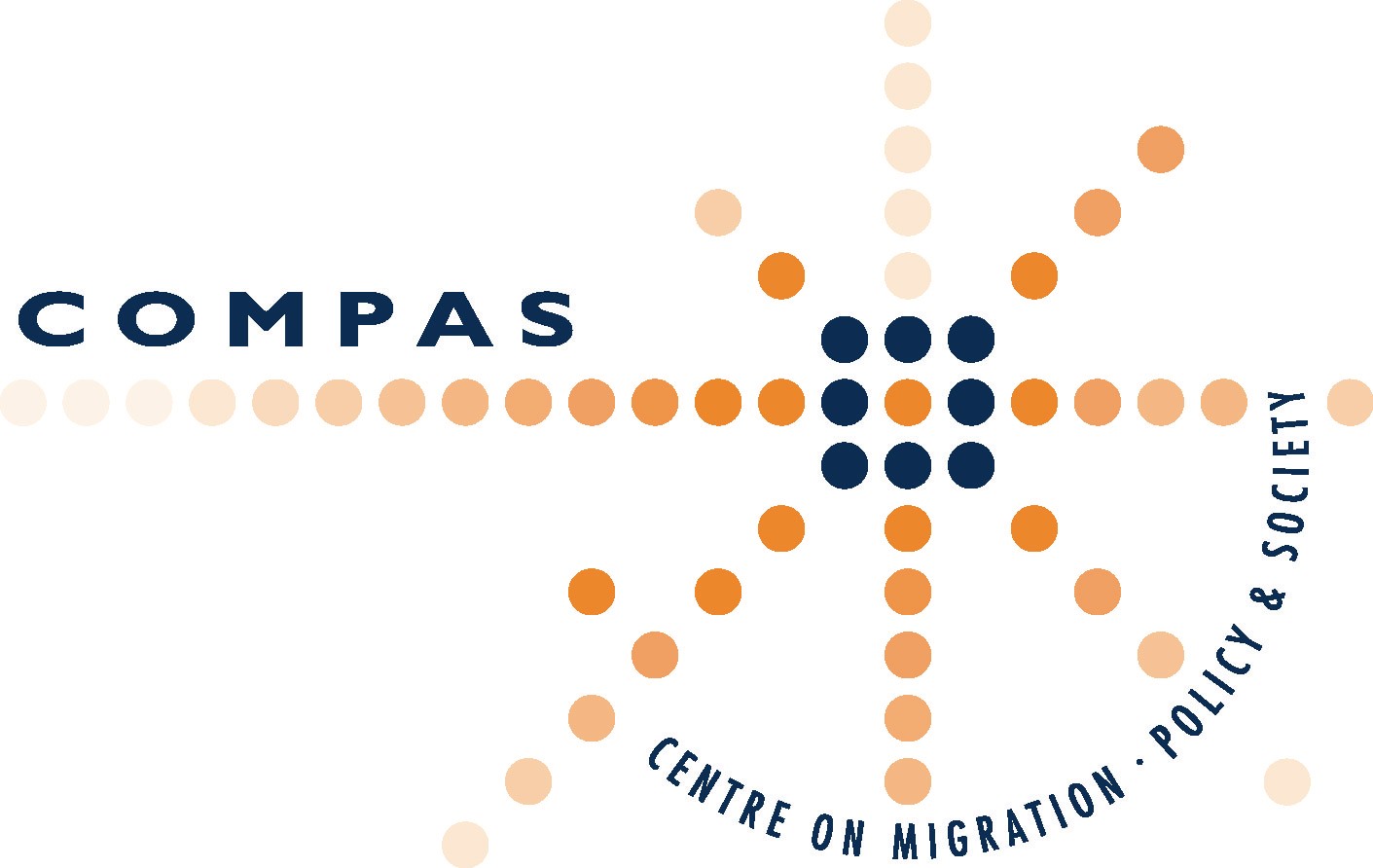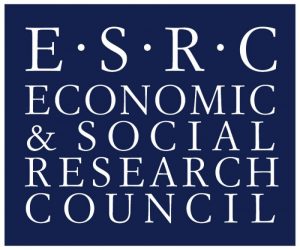Understanding integration processes: informing policy and practice

Governments and cities across Europe are developing strategies to enhance integration. In England, the publication of the government’s Integrated Communities Strategy Green Paper has highlighted integration as a policy challenge at national and local levels. This briefing paper sets out a model of integration to provide a systematic basis for the design and evaluation of integration policies and initiatives.
About the research
The concept of integration refers to processes of interaction, personal and social change among individuals and institutions across inter-related areas of life. The nature, speed and direction of these processes are affected not only by the characteristics of individuals but also the wider social context.
The term ‘integration’ is, however, often used loosely, without a clear understanding of the multiple processes involved. A narrow focus on some important indicators (e.g. gender norms, employment) often obscures the fuller picture.
An integrated approach needs to move beyond one-way models of assimilation, and a focus on migrants and minorities, to recognise that all members of society engage in participation, interaction and change. In practice, the focus of discussion is often on the characteristics and behaviour of individuals (e.g. migrants) to the neglect of society and policy factors.
Recent policy developments, however, demonstrate increasing interest in viewing integration as something in which all members of society are involved and for which there is shared responsibility.
Effective policy intervention requires clarity on the complex processes at play. Extensive research on integration has provided insights on integration processes and the factors which impact on them.
No single initiative is likely to be able to address all of the processes and factors involved, but a systematic approach to conceptualising integration offers the potential for greater clarity in policy aims, identification of barriers to integration, and evaluation of interventions and their outcomes.
Multiple dimensions of integration
The processes of participation and change we call integration take place across several areas of life. We refer to these dimensions of integration as: structural, social, civic and political, cultural, and identity.
Processes in these areas may be separate or interacting. Processes in different dimensions do not always support each other or proceed together in the direction of greater participation over time - they can vary in speed or even reverse (e.g. from employment to unemployment). Indicators used to assess integration provide a snapshot of selected aspects of these processes at a particular time, rather than an end-state or fixed outcome.
Factors affecting integration
Many factors facilitate or impede integration processes. These operate at various levels:
Most processes take place at the local level (e.g. work and social life), but there are also national (e.g. national identity, political engagement) and transnational dimensions (e.g. family or business networks crossing borders).
IMPACTS ACROSS DIMENSIONS OF INTEGRATION:
Employment is often used as an indicator of structural integration. Work can also be a source of social networks. But where low wages lead to long working hours, this can limit time for social life, civic engagement, or even language learning.
VARIATION BETWEEN DIMENSIONS:
People moving to a new area within the UK, or to Britain from overseas, may participate extensively in structural, social, and civic and political domains, but shifts in identity and belonging may happen more slowly.

PROCESSES CHANGING DIRECTION:
As an individual’s social networks expand, they may become more aware of discriminatory attitudes towards them, leading to alienation and disengagement.
INTERACTING FACTORS:
M was a teacher before joining her husband in the UK. To teach here, she needs to convert her qualifications, but as a recent migrant she cannot access student loans, and the family cannot afford her training.
By the time she qualifies for student finance, she is likely to have become a mother with caring responsibilities creating new barriers to further study.
M has individual skills which could facilitate structural integration in the labour market and new social opportunities with people from differing backgrounds, but barriers are created by a combination of family responsibilities and national education and immigration policies.
Model of integrated processes
The model below illustrates the way in which integration processes take place across several dimensions, are multi-directional, and take place at the local and national level. It shows that individuals are often embedded in families and communities; how experience in one dimension can impact on integration processes in another; and that processes may progress differently between dimensions. It also makes clear that individuals are not solely responsible for their integration trajectories - a range of individuals and institutions, from neighbours and employers to service providers and government, share capacity and responsibility for facilitating processes of integration.

Employing this model of the inter-related processes of integration helps policymakers and practitioners to:
• More clearly specify the scope of the aims and mechanisms of interventions (e.g. if addressing only processes in one dimension).
• Take the full complexity of integration processes into account – or acknowledge what is not being addressed.
• Avoid treating processes in isolation - recognise the impact of one dimension on another.
• Focus on both the characteristics of individuals and the opportunities/barriers they face.
• See the full range of factors that impact on integration – not only integration policies.
• Identify shared capacity and responsibilities of individuals and organisations for facilitating integration.
• Recognise fluidity – processes of integration change over time, in both directions.
• Use a model of integration which applies regardless of immigration status – labour and family migrants, refugees, and other residents are engaged in the same processes.
Informing policy and practice
This report sets out a systematic research-based model of integration processes to underpin the design and evaluation of integration policies and interventions.
Using the model - questions to consider
• Specify focus: what dimensions of integration does the policy/initiative address?
• Clarify aims: what is the policy/intervention trying to achieve?
• What is missing: what aspects of integration does it not address? Should it try?
• Are all potential factors that could impact on outcomes taken into account?
E.g. If an initiative aims to increase local social integration: do national policies affect the situation? How about local attitudes or institutions?
• Anticipate unintended consequences: how might initiatives in one domain of integration impact on processes in another?
Further information
• Spencer, S. & K. Charsley. 2016. Conceptualising integration: a framework for empirical research, taking marriage migration as a case study. Comparative Migration Studies, 4, [18].
Available at: https://link.springer.com/article/10.1186/s40878-016-0035-x
• Spencer, S. 2011. The Migration Debate Bristol: The Policy Press. Chapter 6 ‘Integration and Citizenship’ available at: https://www.compas.ox.ac.uk/wp-content/uploads/The_Migration_Debate_extract.pdf
This work was supported by the Economic and Social Research Council [Grant Number ES/K006495/1]
Policy Report 44: January 2019
Understanding integration processes: informing policy and practice (PDF, 1,230kB)
Contact the researchers
Dr Katharine Charsley,
Reader in Sociology, University of Bristol:
katharine.charsley@bristol.ac.uk
Dr Sarah Spencer,
Director of the Global Exchange on Migration and Diversity, and Senior Fellow,
COMPAS, University of Oxford:
Related briefings



